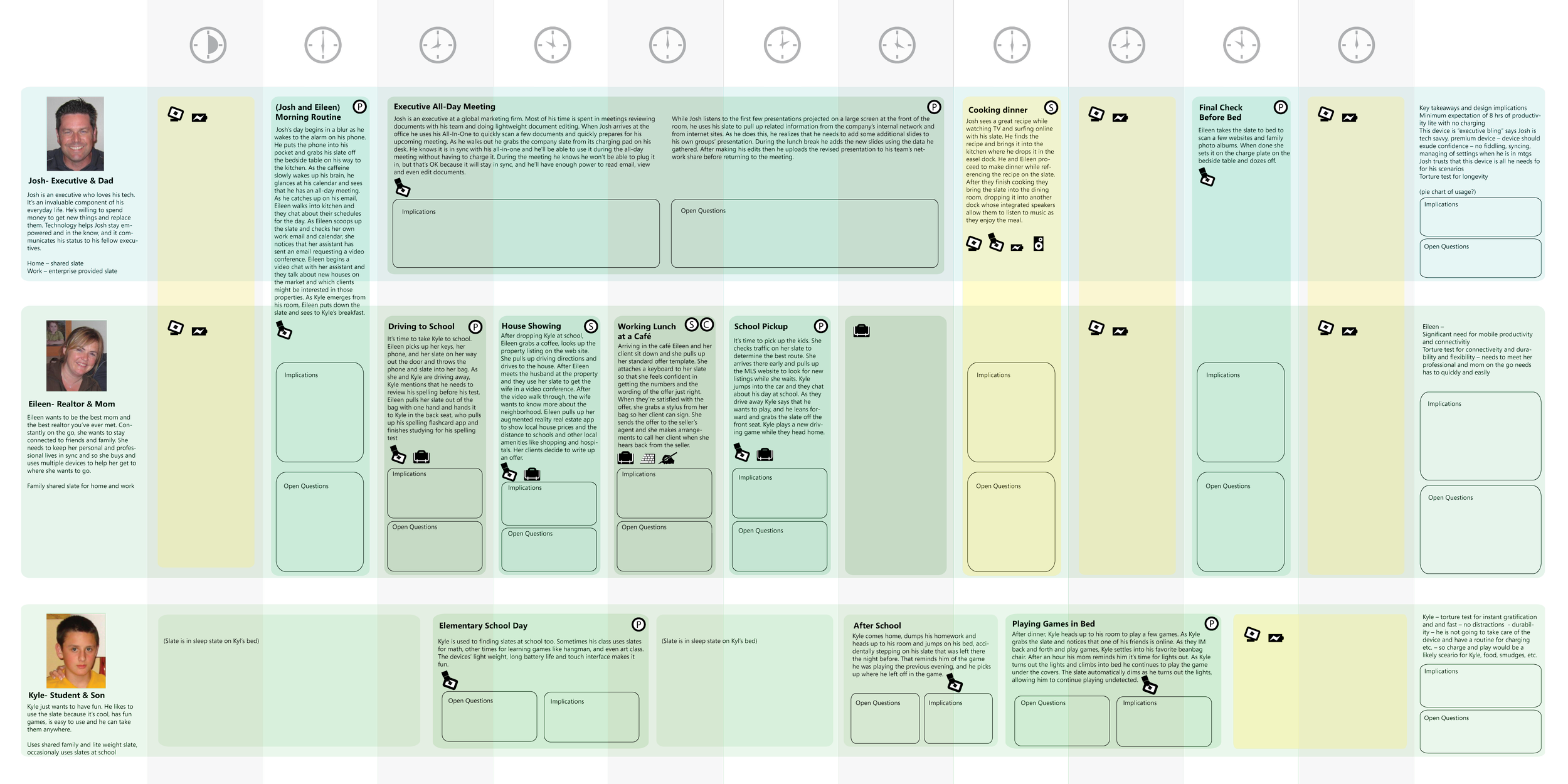Creating an iconic product
One of these is twelve years older than the other…
Many product development teams can create a successful product that follows a paradigm, and that’s often all that’s needed. Once Pandora defined what a streaming music service could be, it wasn’t difficult for Spotify, Apple Music, Google Play and Tidal to create their interfaces. But at the core of many multi-billion dollar businesses, there’s an iconic design. I was lucky enough to be part of the creation of an icon, Microsoft’s Surface - now a $7 billion business.
The challenge we had when we started Surface was there were two existing tablet design paradigms. There was the (frankly miserable) Windows Tablet PC:
One of many failed efforts at a Tablet PC
The other was the wildly successful iPad, which had the fastest growth of any technology product in history:
There were members of the Design team (names omitted) who wanted Surface to be a copy of the iPad. At one point I was told “we don’t know what we’re doing yet and Apple has figured this out, in later versions we can evolve in our own direction but for now we need to copy them”. Obviously, if we had followed through on this approach the Surface business wouldn’t have survived, but ‘copy vs. innovate’ was a battle for over a year.
So, how did we create an iconic design under these conditions? The key was to relentlessly focus on users and their interaction models - or at least the interactions we wanted to enable for users.
David’s original Thinkweek whitepapers, part of the ideation behind Surface. Bill Gates included them in a list of recommended Thinkweek papers sent to all Microsoft employees
The starting point was a couple of whitepapers (‘Thinkweek’ papers in Microsoft-speak) written for Bill Gates. I was one of several people convinced that Microsoft needed to drive the design & engineering of computers that could truly compete with Apple, something we could never expect from our hardware partners.
The original interaction poster David created before the Surface team was formed (he was still iterating on scenarios & names, ‘Connected Mode’ was an earlier name for ‘Create’)
David’s first project for Dell years earlier explored many of these same Interaction Design patterns
Since Windows was moving to a touch-first mindset, we decided from the beginning to use the tablet form factor. The key idea for a Windows tablet was ‘Create’: you had to use it to “get sh*t done*”. Nobody used a first-gen iPad to do work, it was just too difficult. Create was the interaction model that drove our iconic product architecture, and it still works today.
*this was a favorite expression of Panos Panay, the Surface GM
GT: codename for the first generation Surface
Once these interaction models were locked in as a program requirement, we had no choice but to define a new product architecture to support them. Luckily, we had several outstanding Industrial Designers on the team (especially Anthony Reed) who were equally passionate about creating an iconic product.
These are a few of David’s early prototype designs, he created dozens during the ideation phase
Use case scenarios poster - these covered the walls of the Surface Design Studio and described the intended product usage in great detail
These use cases aligned with human postures, as this would be a device that could be used on the couch, in bed, propped on the user’s lap as well as at a desk. The usability of these postures is something Apple has spent the last decade trying to match with a series of accessories for the iPad. These postures drove many interaction design decisions - for example, the forward-facing camera matches the screen angle for video conferencing, while the rearward camera remains horizontal when the kickstand is used (great for filming a college lecture for example).
Postures = use cases = product architecture = iconic design
Surface created the icon, it seems Apple agrees
It’s not often that your baby gets a Times Square product launch
The Verge:
“[Surface] made Windows 8 make sense in a way other products had not, and I could see a world where this kind of device was the only one I carried with me.”
Gizmodo:
“Microsoft Surface Just Made the MacBook Air and the iPad Look Obsolete”
Wired:
“Let’s at least get this out of the way: This is one of the most exciting pieces of hardware I’ve ever used. It is extremely well-designed; meticulous even.”
In summary, when you’re ready to create an iconic product for your business, make sure you have a clear vision of a new user experience that you’re enabling. If in doubt, we can help!
To read a (very) detailed history of the creation of Surface, check out Steven Sinofsky’s blog: link












